When talking about cyberpunk, it’s easy to let the originators of the genre and those early texts dominate the conversation—Gibson, Sterling, Cadigan, Mirrorshades. But since its inception, cyberpunk has been an evolving subgenre, picked up across the decades by writers seeking to say something relevant to the contemporary moment through the increasingly-normalised cyberpunk lens.
To that end, here’s a list of five 21st Century cyberpunk books that resonate with the now.
Infomocracy by Malka Older
Buy the Book
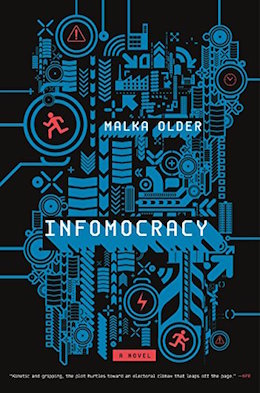

Infomocracy
It would be easy to make an argument for Infomocracy to be the most relevant cyberpunk thriller of the past few years, considering its heavy focus on politics, and our (seemingly increasing) obsession with the same. In the near-future setting of the book, nation states have given way to a world split up into 100,000 person centenals, with various local and multinational governments vying for control of these, and a few notable parties aiming to use fair means and foul to secure a global supermajority. That might sound like a dry setting for a cyberpunk thriller, but Older makes it work by focusing on operatives at work on the ground, including Ken, who gathers data undercover for the aptly-named but dry Policy1st, and Mishima, a bad-ass agent of the ubiquitous Wikipedia-analogue simply named Information, which serves to provide exactly that—cutting through the lies and misinformation of advertising, politics, and the like, to give people the unadulterated truth.
But despite the work of Mishima and others, misinformation runs rife—the punchy libel far more interesting and entertaining than the screeds of text Information provides in rebuttal. This is one way that Infomocracy speaks to our present moment: we’ve all seen first-hand the ways that misinformation, rumours, and outright lies will capture people’s attention, going viral across social media, and even tying up the mainstream media for months on end.
Sadly, there’s another element of Infomocracy that speaks to the now—the way the book details the slow rise of an aggressive quasi-fascist politics, the siren call of authoritarianism, and (even localized) prejudicial dog-whistling.
Tears in Rain by Rosa Montero
Buy the Book
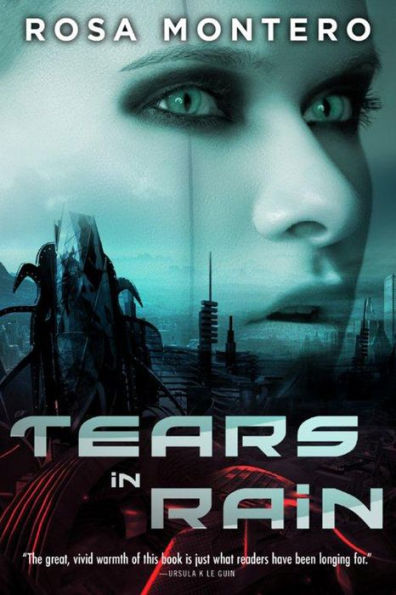

Tears in Rain
As you can probably gather from the name, Rosa Montero’s Tears in Rain takes more than a little influence from the film Blade Runner. Where uncertainty about Rick Deckard’s humanity is central to Blade Runner (as well as the broader question of the personhood of replicants), Tears in Rain’s Bruna Husky is well-aware of her artificial status, and is (understandably) preoccupied with her rapidly approaching expiration date.
But the similarities end there, with Montero setting her novel in the bustling 22nd Century, populated with humans, replicants, alien refugees, and people mutated as a side-effect of teleportation. With its central plot concerning a human supremacist conspiracy, and the machinations of a violent fascist seeking to gain power, the story could (sadly) reflect modern politics in various parts of the world, but it’s something else that made me want to talk about Tear in Rain: animal extinction.
In Do Androids Dream of Electric Sheep?, Blade Runner, and Tears in Rain, environmental degradation has led to mass extinction and replicant animals have taken on great significance. But where the animal extinctions never quite struck me in the former two works, a scene in Tears in Rain with a replicant clone of the final polar bear—the polar bear endling –stayed with me long after I’d finished the book. It’s a minor point though, so I can only guess that it stayed with me because of guilt at living through the Sixth Great Extinction (or extermination, if you prefer).
Gnomon by Nick Harkaway
Buy the Book
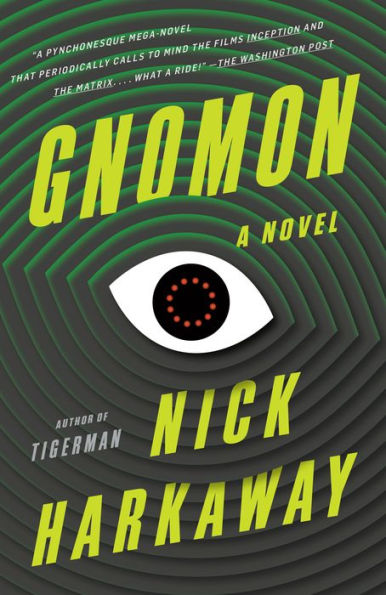

Gnomon
Gnomon both is and is not a cyberpunk novel. The hefty, 680-page slab is something akin to cyberpunk as literary novel. From that description, some of you immediately know this book isn’t for you, while others just had their curiosity piqued.
Gnomon begins by telling the story of Mielikki Neith, an Inspector in The Witness, a surveillance and policing organization in a future Britain that learned all the wrong lessons from Orwell’s 1984. Neith been tasked with investigating the death of Diana Hunter, who died while undergoing a brain scan intended to reveal if she had any illegal or dangerous intentions, relationships, or similar. But instead of finding evidence of any guilt, the scan uncovered incredibly detailed personalities buried inside Hunter’s mind in a recursive loop designed to keep her true secrets hidden. These constructed persons and their stories make up Gnomon’s other layers, each one realized with such a distinct narrative voice that one can’t help but be in awe (or jealous) of Harkaway’s skill.
Today, with increasing use of surveillance over the general population justified by supposed criminal activity, terrorism, and—more recently—the spread of a dangerous pandemic, and the system of online surveillance we log into every day, the core questions about privacy presented by Gnomon are more important than ever. A common refrain from technocratic sorts is “If you’ve got nothing to hide, then you’ve got nothing to worry about,” but that has never been a good enough justification for the construction of this digital and actual panopticon—a point that Gnomon makes brilliantly.
Square Eyes by Anna Mill and Luke Jones
Buy the Book
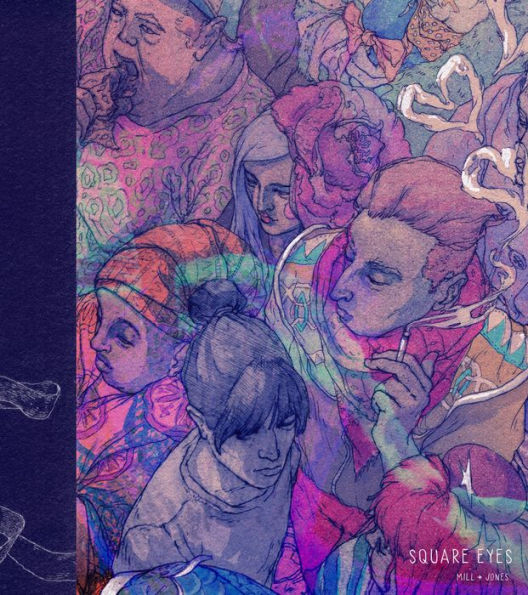

Square Eyes
Square Eyes is a gorgeous cyberpunk comic with art that is both dreamy and incredibly detailed, colours that seem to softly glow, and an exquisite design sensibility that ties together all the visual elements in service of the story.
That story follows Fin, a superstar software designer who just returns to the world after time spent at an offline rehab centre, only to find that she’s completely disconnected from the digital systems that control so much of society, her company has been taken out from underneath her, and another woman has taken up residence in her apartment and her life.
Square Eyes resonates with the real world and our current moment in the way that it shows the digital and actual reality overlaid one atop the other. In the world of the comic it’s a visual overlay—augmented reality hiding the grimier parts of the city from view—but in our world it’s mostly confined to our phone screens or maybe our computers. However it’s represented, the line between online and offline has completely dissolved in a way that has turned our lives into a (generally) very mundane cyberpunk story. In many ways, these digital connections are a plus, but Square Eyes encourages us to ask if we can really trust the corporate culture facilitating this connectivity.
Normal by Warren Ellis
Buy the Book


Normal
Normal isn’t a cyberpunk book, but it is a book set in an analogue of our very post-cyberpunk now. See, the novella is set in Normal Head, a sort of detox centre for futurists at the end of their tether; people who’ve gazed too long and too deep into the abyss and been broken by the experience.
It’s a notion that resonated with futurists when the book was published, and with the increasing acceleration of news media and news via social media—with all the commentary, “well actuallys”, memes, and misinformation that comes along with both—this overdose of abyss gazing has become a common ailment affecting all of us who live our lives a little too online. Whether that’s the seemingly-endless US election cycle, the slow-apocalypse that is the climate crisis, COVID-19, or various extreme weather events, terrorist attacks, famines, etc, the information streams flowing into our phones and our eyes are filled with outrage, confusion, injustice, and horror. It can be overwhelming, and if you let it, it can make it so that any time you look ahead to the future you see nothing but that approaching abyss.
Normal is another example of Warren Ellis’ (accidental?) prescience. Where the story’s futurists would retreat to Normal Head to gather themselves before another bout of abyss gazing, in the real world we’re desperate for tips, tricks, and guides for digital detox, Marie Kondo-ing our online experience, Waldenponding—for something, anything that might give us a break from the abyss. Normal is not a cyberpunk book, but it speaks directly to our information-saturated, mundane-cyberpunk present moment. It’s also an excellent low-key techno-thriller, steeped in Ellis’ trademark sharp wit and weirdness.
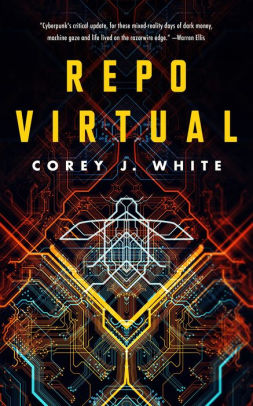 Corey J. White is a writer of science-fiction, horror, and other, harder to define stories. He studied writing at Griffith University on the Gold Coast, and is now based in Melbourne, Australia. He is the author of Killing Gravity, Void Black Shadow, and Static Ruin. His latest, Repo Virtual, is available April 21st from Tor.com Publishing.
Corey J. White is a writer of science-fiction, horror, and other, harder to define stories. He studied writing at Griffith University on the Gold Coast, and is now based in Melbourne, Australia. He is the author of Killing Gravity, Void Black Shadow, and Static Ruin. His latest, Repo Virtual, is available April 21st from Tor.com Publishing.










